An abandoned railroad track might not seem like an ideal place for a public garden, but the High Line proves that gardens can exist anywhere, in any form. Celebrating its 15th anniversary in 2024, the High Line is a landscaping feat that transformed a once-abandoned brownfield into a lush urban oasis. As the photos here show, the green artery now glides 30 feet above New York City streets.
The High Line is undoubtedly one of the most important public gardens of our time. It has forever changed the way we think about public spaces and gardens. Today it is one of the best-known examples of reusing old, unused land and welcoming diverse plant life back into the heart of an urban area. Where there was once disrepair and ruins, there are now gardens.
The High Line, designed by Dutch garden designer and New Perennial Movement leader Piet Oudolf, remains an example of how gardeners can overcome urban challenges. I spoke to Richard Hayden, Senior Director of Horticulture at the High Line, as his team landscapes the 2.3km public park to mark this landmark anniversary. Here, he shares some of the lessons his team has learned about using resilient, diverse, and native plants in the city.
(Image courtesy of High Line – Photo by Timothy Schenck)
3 urban gardening lessons from the High Line
The High Line has changed the way we think about public gardens and urban spaces, and urban gardeners can learn a lot from this internationally renowned project about the importance of maximizing green space in inner-city areas for the benefit of the community, and for the animals and insects that seek shelter and food in crowded areas that are often lacking in biodiversity.
A garden should be enjoyable all year round
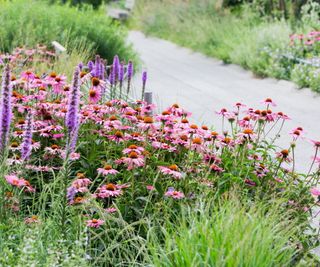
(Images courtesy of High Line – Photo by Liz Ligon)
“The High Line changed the way we think about public space and the utility of land in urban centers,” says Richard Hayden. “I think it's one of the most important public gardens of the 21st century and it has definitely changed our perception of urban horticulture.”
“Gardening here can be challenging,” Richard continues, “with the soil being about 18 inches deep, a few tall planters scattered about and limited space.”
Because of this, every plant must earn its place: every tree, shrub and perennial must contribute something to the garden: shy violets and finicky plants have no place here.
“The High Line is a garden for all seasons,” adds Richard. “It has to be as beautiful in winter as it is in summer. As Piet Oudolf says, if a plant isn't beautiful when it's dead, it's not worth having.”
In urban spaces, or any garden, it's important to think about interests beyond just the growing season: Richard's advice is that a garden should look beautiful at any time of the year, whether it's mid-summer or mid-winter.
“There are lots of plants that really come into their own in both autumn and winter,” says Richard, “and we see their dead flowers as seed skeletons that add to their appeal later in the year. For example, Culver's root (Veronicastrum virginicum) is a fantastic plant that attracts the 33 species of bees that visit the High Line in summer, but in winter the seed heads turn a beautiful deep black.”
“Another notable plant is autumn marsh grass, Sesleria autumnalis,” adds Richard. “It's probably the plant we grow most often at High Line. It's a resilient understory plant that adds great texture in any season.”
Plants such as culver's root and fall marsh grass are important for year-round interest. Gardens aren't just for spring and summer. Considering fall and winter color and texture is important, especially in small gardens. For example, planting a native dogwood or two will provide seasonal interest with flowers in the spring, foliage in the summer, and foliage in the fall.

Social Links Navigation
Senior Director of Horticulture at Highline
Richard Hayden is Senior Director of Horticulture at the High Line on Manhattan's West Side. He previously served as Deputy Director of the Natural History Museum of Los Angeles County and was the lead project manager for the re-envisioning of the La Brea Tar Pits Museum, where he also oversaw the Nature Gardens and Wildlife Habitat.
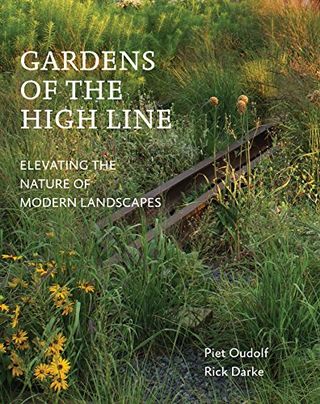
The book tells the story of the High Line's transformation from a once untouched and neglected landscape into the gardens and lush retreat we know today.
Combining native and exotic plants creates resilient spaces
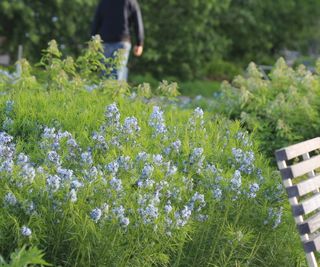
(Images courtesy of High Line – Photo by Ayinde Listhrop)
“To enrich a garden, we need a broader palette than just native plants,” Richard continues. “Of course, native plants are important — we grow about 160 New York City native species throughout the High Line — but planting them alongside diverse and resilient non-native species is key to our success.”
“The High Line is a vibrant space,” Richard continues, “known for its intricate and diverse plantings. We grow birches, ferns, dogwoods and Virginia bluebells, along with the finest native grasses.”
Richard recommends two native species that produce eye-catching blooms: “Butterfly Milkweed (Asclepias tuberosa) is an incredibly hardy native plant. Growing throughout the Western Rail Yard section of the High Line, this North American native is a huge magnet for monarch butterflies with its nectar-rich orange blossoms.
“I also love the threadleaf blue star,” Richard continues. “This quirky little North American native is from Arkansas and thrives in floodplains and can tolerate drought. It's a plant that can thrive in any weather.” You can see its delicate blue flowers in the photo above.
When I worked as a gardener in the UK, I grew Threadleaf Blue Star, aka Amsonia habrecitii. This ornamental plant's blue, star-like flowers bloom spectacularly in spring and provide a spectacular display of colour in autumn as its once-green leaves turn various shades of yellow and amber.
“Using hardy native plants like Threadleaf Blue Star is essential for gardeners. What we're experiencing is more climate disruption than climate change,” Richard explains. “Severe temperature swings and droughts are posing real challenges for gardeners.”
A garden should be an emotional and attractive space.

(Image courtesy of High Line – Photo by Andrew Fraz)
“The High Line is a vibrant public garden that welcomes more than 8.5 million visitors each year, but it is designed to be an evocative space of peace and contemplation,” Richard says.
As a gardener myself, I believe that outdoor spaces, large or small, public or private, can be emotionally engaging experiences. Gardens should provide tranquility and calm, encouraging serenity and reflection. All green spaces can achieve this. Whether you have a tiny balcony or a vast backyard, making the most of the green space in your life and welcoming the natural world can only be a good thing.
“Naturalistic gardens are not a passing fad,” says Richard. “These plants, our gardens, speak to something inside all of us. We all have experiences of nature that evoke memories and emotions.”
“The plantings along the High Line have become so well established that it feels as though the gardens have always been there. It's wonderful to see joggers and commuters using the space in the early morning, or visitors taking a moment to reflect on the benches between busy days. For a moment, you forget you're in the bustling heart of New York City.”
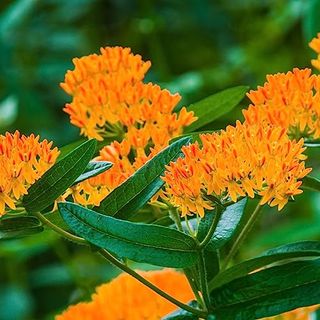
Butterfly Milkweed Plant
Butterfly milkweed (Asclepias Tuberosa) is native to North America and produces masses of orange flowers that butterflies love.
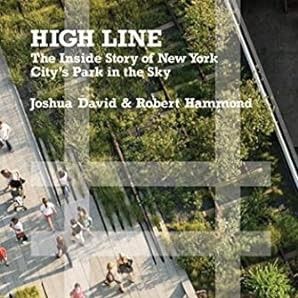
The High Line: The Inside Story
The story of how the High Line came about is a remarkable one, with local people coming together to create a world-famous park.
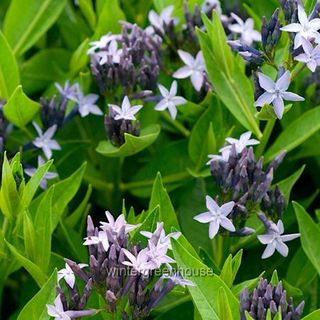
The striking and unusual blue flowers of Amsonia 'Blue Star' make this perennial, native to North America, a real eye-catcher.
FAQ
What are the best hardy shade plants for urban gardens and balconies?
There are plenty of shade plants that do well in pots in urban lots. Learn how to grow hostas in pots, or consider growing a native plant, the tiarella, commonly known as foam flower. This native American perennial is one of my favorites and is often considered one of the best perennials for full shade.
The High Line is one of the world's most famous public gardens, and we can all learn a lot from this smart, sensitive approach to planting and growing resilient plants. For more information on resilient perennials and shrubs, check out our guide to ditch plants, which covers hardy, nearly indestructible plants that can withstand heat, frost, and rain.


